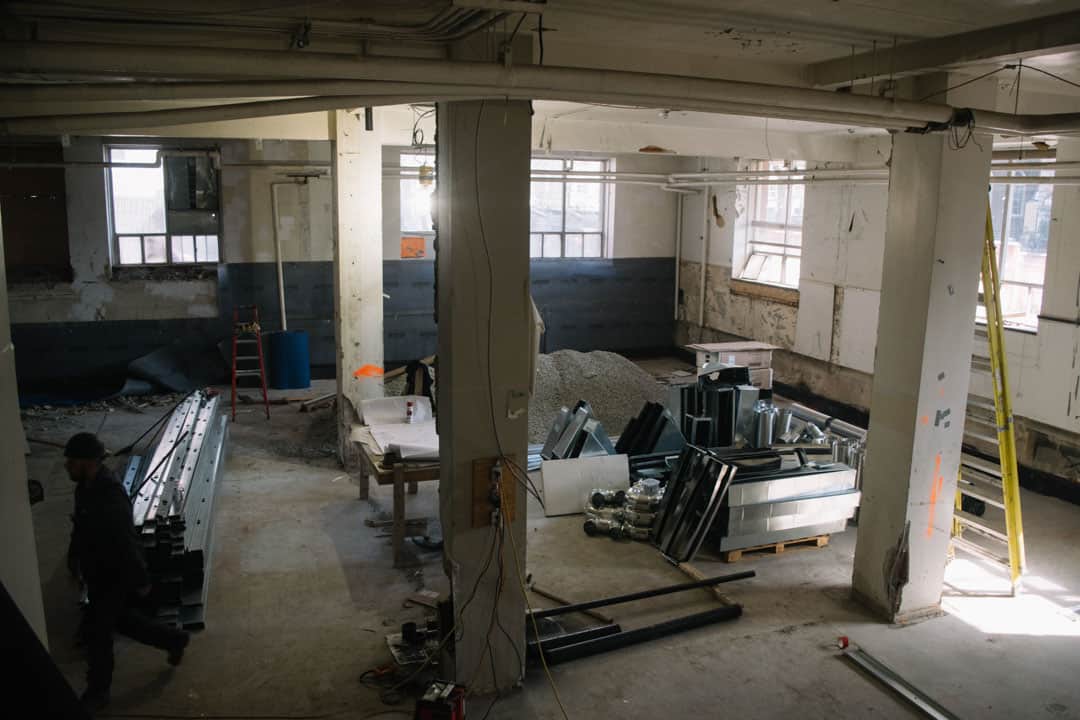The University of Toronto Students’ Union’s (UTSU) Student Commons project — first proposed in the ’60s and approved by students in 2007 — has been fraught with delays and modifications to its original plan. Now, the UTSU projects an April 2020 soft launch, with the building being fully operational in September 2020. Funded by an $11.26 levy per student, the space aims to be the first student-run centre on the UTSG campus.
The history of the Student Commons
In 2007, students were promised a space that would include a 600-person auditorium, three restaurants, and office spaces for student groups. The project was originally supposed to be located where the Goldring Centre for High Performance Sport now stands. Instead, it will now be at the old location of the John H. Daniels Faculty of Architecture, Landscape, and Design at 230 College Street. The referendum to begin collecting a levy from students to fund the project passed later that year.
In 2015, the UTSU signed the Revised Student Commons Agreement, a binding document between the UTSU and the university. Former UTSU President Mathias Memmel, then Vice-President, Internal, criticized the UTSU executive that year for a lack of consideration when signing the document.
He said that the agreement “appears to have been negotiated and signed by the UTSU without due consideration of the real, long-term requirements for the building’s operations and the project’s financing as a whole.” Memmel also wrote that it favoured the university and was overall an “imbalanced deal.”
The Student Commons threatened to put the UTSU in financial jeopardy. In a 2017 op-ed in The Varsity, Memmel wrote, “Bankruptcy became a real possibility.”
That year, the project was revised so as to avoid a $500,000 deficit and the possibility of the building being seized by the university, which would occur if the project ran a deficit for two consecutive years after the first three years of operation. Current UTSU President Joshua Bowman said that the most recent deficit projection for the first year of operation is around $112,000, and that the project will reach a surplus after six years of operation, but clarified that the Student Commons’ operating costs would be covered by UTSU reserves.
Where the Student Commons is now
According to Bowman, the Student Commons costs $24.5 million to build, and will cost around $600,000 to operate. Students are paying $11.26 each semester of the 2019–2020 school year.
The UTSU has been collecting the capital levy from students since 2008. This levy pays for the renovation and building costs, as well as the licensing fee that is paid to the university every year. Costing $200,000 each year, the licensing fee will continue to be collected for 25 years after the building opens.
When the building is fully operational in September 2020, students will also be paying an operating levy. Sources of revenue for the project once it is operating include space rentals and program partnership grants.
UTSU executives from this year and last year expressed that the project’s delays were due to the difficulty of renovating an old building, as well as “a significant amount of asbestos” that had to be dealt with.
Speaking on the projected opening dates at the 2019 Annual General Meeting, Bowman noted, “[Bear] in mind that that is what our contractor has told us, and they have also been the same ones that have given us dates in the past.”
In an email to The Varsity, Bowman wrote, “Our timelines are set by the University Capital Planning Department and informed by the pace of construction. Additional delays could still happen… It is impossible to be certain given the continuously moving target set by our partners.”
Still in the midst of construction, Bowman wrote that “most large scale engineering within the building has been completed and the current work is being directed towards finishing the floors, walls, ceilings and lighting.”
The UTSU will move into the Student Commons when it opens, along with Student Life and the Innovation Hub. The Student Commons is also planned to have space for student groups, a student-run cafe, and an accessible kitchen.


